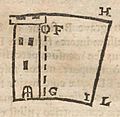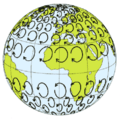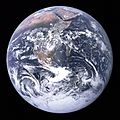Coriolis effect facts for kids

The Coriolis effect is a force that is found in a rotating object. Gaspard Gustave de Coriolis first described the Coriolis effect in 1835 using mathematics. The Coriolis effect can best be seen in hurricanes. In the northern hemisphere, they spin counter-clockwise (because the earth spins counter-clockwise), and in the southern hemisphere they spin clockwise.
One example of the Coriolis effect that is often described is that water flows down a drain in the opposite direction in the northern and southern hemispheres. However, in reality, the force of the Coriolis effect is not strong enough to see in such a small amount of water.
Images for kids
-
Image from Cursus seu Mundus Mathematicus (1674) of C.F.M. Dechales, showing how a ball should fall from a tower on a rotating Earth. The ball is released from F. The top of the tower moves faster than its base, so while the ball falls, the base of the tower moves to I, but the ball, which has the eastward speed of the tower's top, outruns the tower's base and lands further to the east at L.
-
A carousel is rotating counter-clockwise. Left panel: a ball is tossed by a thrower at 12:00 o'clock and travels in a straight line to the center of the carousel. While it travels, the thrower circles in a counter-clockwise direction. Right panel: The ball's motion as seen by the thrower, who now remains at 12:00 o'clock, because there is no rotation from their viewpoint.
-
Bird's-eye view of carousel. The carousel rotates clockwise. Two viewpoints are illustrated: that of the camera at the center of rotation rotating with the carousel (left panel) and that of the inertial (stationary) observer (right panel). Both observers agree at any given time just how far the ball is from the center of the carousel, but not on its orientation. Time intervals are 1/10 of time from launch to bounce.
See also
 In Spanish: Efecto Coriolis para niños
In Spanish: Efecto Coriolis para niños












